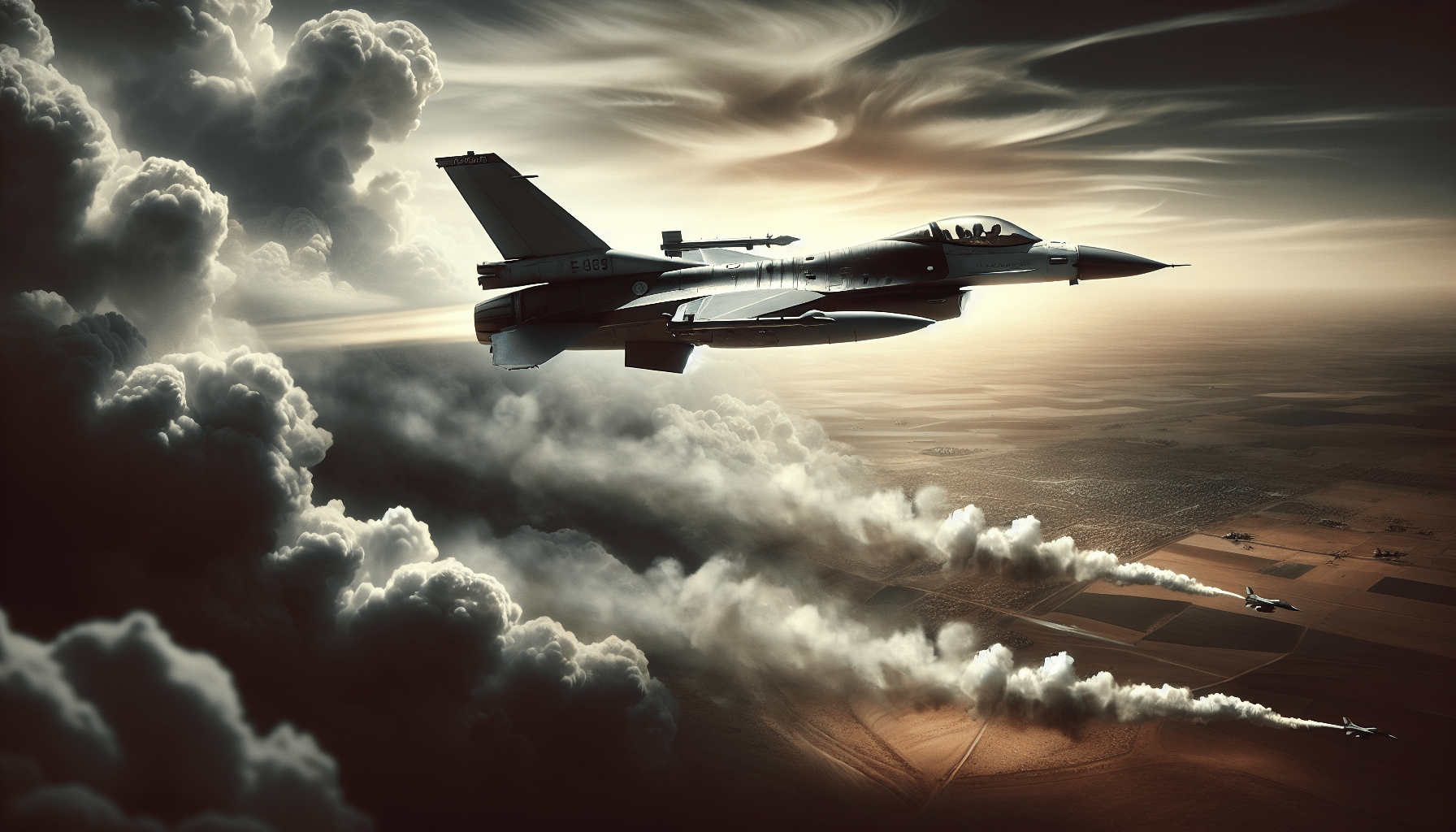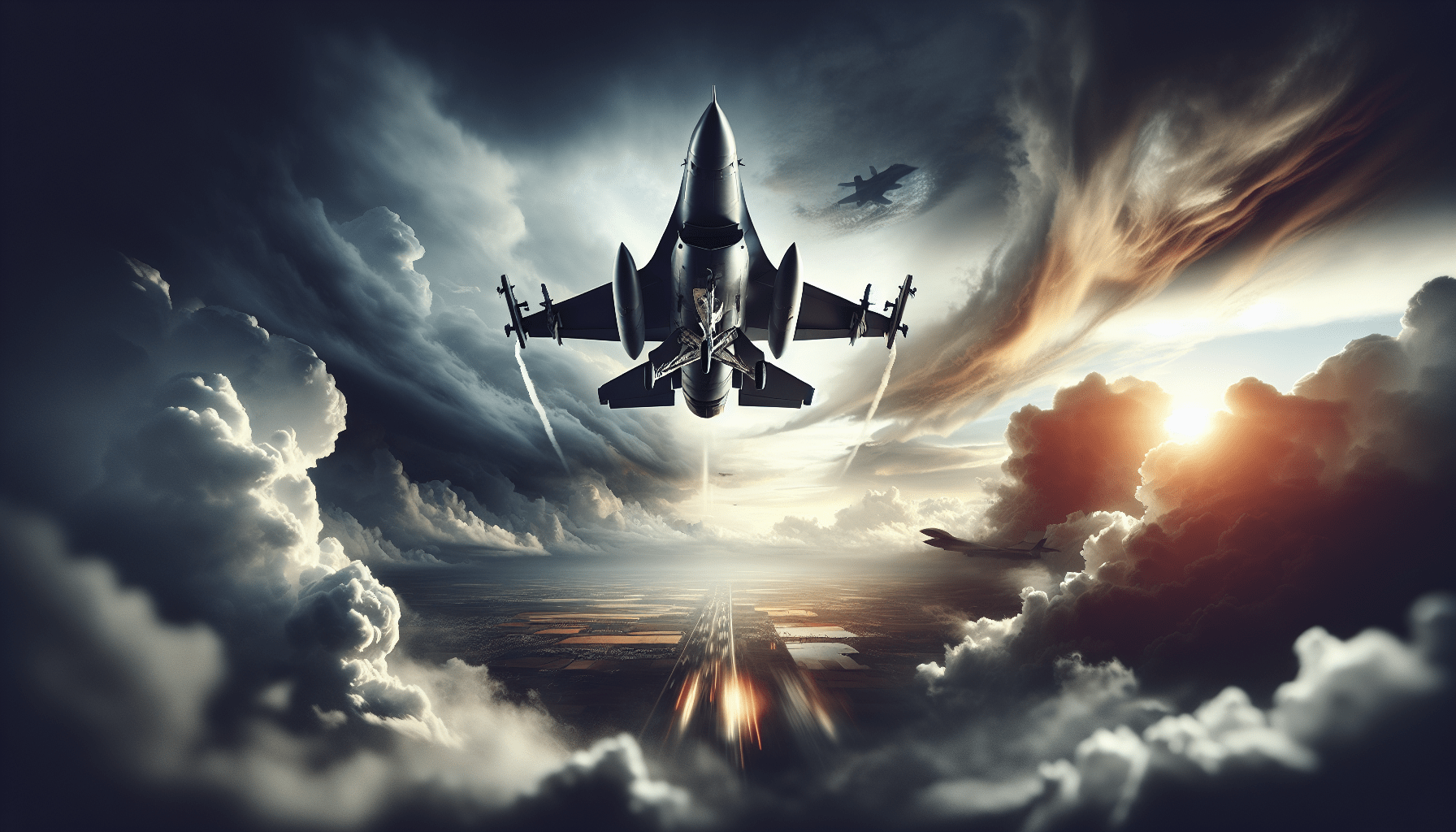The introduction of F-16 Fighting Falcons into the Ukrainian Air Force represents a significant development in the ongoing conflict. Announced by President Zelensky on August 4, the arrival of these advanced fighter jets marks a pivotal shift in Ukraine’s air defense capabilities. Currently, six F-16s are actively engaged in combat, having successfully intercepted Russian cruise missiles and drones, which are critical threats to Ukrainian infrastructure. This article analyzes the initial operational performance of the F-16s, their strategic role, and the challenges faced by Ukrainian pilots.
The analysis further examines the integration of support systems, notably the Saab 340 airborne early warning radar aircraft from Sweden, which enhances the effectiveness of the F-16s by improving situational awareness and tracking capabilities. Despite the advantages conferred by modern technology and new weaponry, Ukrainian forces continue to face significant disadvantages, including a substantial disparity in aircraft numbers and capabilities against their Russian counterparts. The evolving narrative surrounding the F-16s underscores their potential to influence future operations, although immediate outcomes may not reflect a drastic change in the war’s dynamics.
F-16 Fighters in the Ukrainian Conflict: An Academic Analysis
Introduction of F-16s to Ukraine
Announcement by President Zelensky
The integration of F-16 Fighting Falcons into the Ukrainian Air Force marks a significant milestone in Ukraine’s military capabilities amidst ongoing conflict. Announced by President Volodymyr Zelensky on August 4, 2023, the arrival of these advanced fighter jets symbolizes not only a tactical escalation in warfare but also a strategic commitment by NATO allies to bolster Ukraine against its aggressors. Please note that these aircraft are perceived as game changers in air superiority and operational efficacy.
Initial Expectations and Operational Timeline
Initial anticipations for the deployment of the F-16s were tempered by real-world constraints. Although Zelensky’s announcement generated considerable enthusiasm, it realistically signified the beginning of a long-term operational adaptation process. The initial plan entailed a phased integration of these fighter jets into Ukraine’s existing military framework, with the expectation that full operational capability would take time due to training, logistics, and hardware delivery schedules.
Delivery and Quantity of F-16s
NATO’s Commitment to Supply Fighter Jets
NATO’s commitment to providing Ukraine with 85 F-16 fighter jets was a pivotal moment in international military cooperation. This generous pledge illustrates the alliance’s collective resolve to counter Russian aggression and maintain regional security. While a robust supply of equipment underscores strategic commitments, the practical implications of delivery schedules raise questions about immediate effectiveness in combat.
Current Delivery Status and Future Projections
As of August 27, 2023, only six F-16s have been delivered and are actively engaged in combat operations. The rest of the pledged aircraft have variable delivery timelines, projected to take several years to arrive in Ukraine. Such delays necessitate strategic considerations regarding interim air defense capabilities and operational readiness, highlighting the complexities involved in international military support.

Initial Combat Performance of F-16s
Success in Intercepting Russian Missiles and Drones
The F-16s have achieved notable success in their initial assignments, successfully intercepting multiple Russian cruise missiles and drones. This success is particularly crucial as these aerial threats target strategic assets like Ukraine’s power generation facilities. The aircraft’s advanced avionics and weaponry, including air-to-air missiles, have proven effective in safeguarding critical infrastructure.
Impact on the Defense of Ukrainian Power Facilities
The F-16s’ role in air defense has emerged as a centerpiece of Ukraine’s strategic operations. By intercepting incoming aerial threats, these aircraft significantly contribute to the safeguarding of critical infrastructure, thereby ensuring continuity in civilian energy supply and bolstering national morale amidst the ongoing military conflict.
Incident on August 29
Details of the Pilot’s Loss
A tragic incident occurred on August 29, 2023, when an F-16 pilot, identified by the callsign “Moonfish,” tragically lost contact during a significant Russian missile attack. The Ukrainian government has confirmed that the pilot was KIA after their aircraft crashed, although the circumstances—whether due to a mechanical failure or hostile engagement—remain unclarified. This reflects the inherent risks associated with combat missions and underscores the tactical challenges confronting Ukrainian forces.
Implications for F-16 Operations in Ukraine
The loss of the “Moonfish” pilot carries several implications for the F-16 operations. It highlights the dangers faced by Ukrainian aviators in a contested aerial environment dominated by Russian missile technology and tactics. Furthermore, this incident may lead to a reassessment of operational procedures and increase focus on pilot safety and mission planning.

Defensive Role of F-16s
Focus on Air Defense Operations
Currently, the employment of the F-16s has been predominantly focused on air defense operations. This is indicative of an initial strategy aimed at countering immediate aerial threats rather than executing offensive missions. Such a defensive posture is shaped by the overall air superiority challenges faced by Ukraine, particularly in relation to the quantitative and qualitative advantages held by Russian air forces.
Limitations on Offensive Capabilities
Despite the advanced technology of the F-16s, their current deployment underscores the limitations inherent in offensive capabilities due to Ukraine’s existing vulnerabilities. Initially tasked with air defense, the F-16s are constrained by operational parameters and require an enhancement of support mechanisms before transitioning to a broader offensive role.
Support from Saab 340 Radar Aircraft
Role of Sweden’s Contribution in Situational Awareness
The integration of Saab 340 airborne early warning radar aircraft from Sweden represents a significant upgrade in Ukraine’s surveillance and situational awareness capabilities. These aircraft are equipped with sophisticated radar systems capable of detecting aerial threats well before they reach critical infrastructure, fundamentally enhancing the effectiveness of F-16 operations.
Enhancements to F-16 Operational Effectiveness
The introduction of the Saab 340 aircraft acts as a force multiplier for the F-16s, enabling better target acquisition and tracking of enemy missiles. This synergy creates a more robust integrated air defense network, facilitating a comprehensive approach to countering aerial threats and improving response times to incoming missiles or drones.

Force Multiplier Concept
Importance of Integrated Radar Systems
The effectiveness of modern air operations heavily relies on integrated radar systems for comprehensive situational awareness. The collaborative operation of F-16s and Saab 340 airborne early warning radar aircraft acts as a critical force multiplier, effectively enhancing Ukraine’s capacity to detect and react to air threats, while elevating overall combat efficacy.
Improving Tracking of Enemy Threats
The combined capabilities of these systems facilitate enhanced tracking of enemy movements, enabling Ukrainian forces to respond more swiftly and accurately to aerial threats. As such, a more coordinated and timely response could translate into increased success rates in intercepting hostile missiles and drones.
Challenges Facing Ukrainian Pilots
Disadvantages in Aircraft Numbers and Resources
Ukrainian pilots operate under severe constraints, notably facing significant disadvantages in overall aircraft numbers and resources. A staggering 13:1 ratio in total aircraft against the Russian air force presents formidable challenges that complicate operational strategies and engagement scenarios.
Impact of Outdated Equipment on Engagements
Moreover, the reliance on older aircraft complicates Ukraine’s engagements. Outdated systems limit operational flexibility and effectiveness, amplifying challenges faced when confronting advanced Russian weaponry and tactics. Ukrainian forces must navigate these limitations while integrating new technologies, such as the F-16s, into their operational repertoire.
Future Potential of F-16s in Ukraine
Possibilities for a Shift to Offensive Operations
As additional F-16s come online, there exists the potential for shifting from a purely defensive posture to more offensive capabilities. This evolution will depend critically on the maturation of pilot training, logistical support, and the integration of sophisticated weapons systems that maximize the aircraft’s potential for offensive operations.
The Role of Additional Aircraft in Strategic Planning
The inclusion of further aircraft support and logistical enhancements is vital for a successful shift to offensive operations. Effective integration into Ukraine’s broader military strategy will enable a more aggressive posture, as well as enhance the country’s deterrence capabilities against Russian advances.
Conclusion
Overall Assessment of F-16s Impact on the Conflict
In summation, the integration of F-16s into the Ukrainian Air Force represents a significant tactical and strategic development in the ongoing conflict. While early combat performance showcases their potential and effectiveness in intercepting aerial threats, the challenges of operational limitations and pilot resource disparities must be addressed.
Future Considerations for Ukrainian Air Strategy
Looking forward, the successful integration of F-16s into Ukraine’s air strategy will necessitate continuous evaluation of both operational capabilities and training commitments. As additional aircraft and technological enhancements arrive, there lies substantial potential for an evolving air strategy that could reshape Ukraine’s position in the conflict and redefine the dynamics of air warfare in the region.
